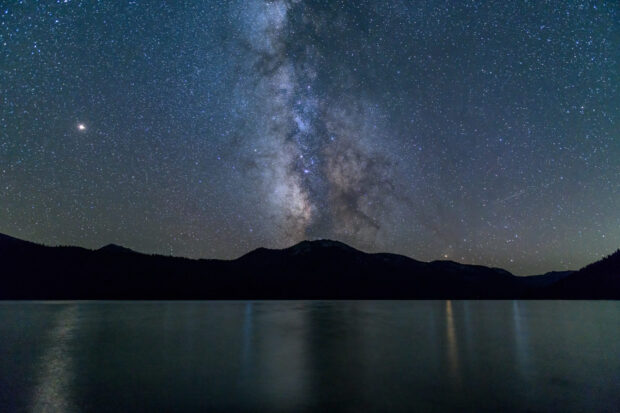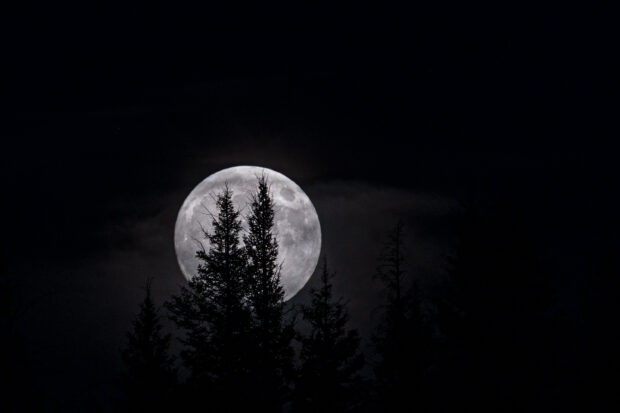Astronomer Brian Jackson says it’s hard to verbalize why a 1,416 square-mile stretch of Central Idaho land is special, but it’s obvious when you visit it on a clear night.
The sky and stars pour out into the horizon — in one of few places on earth where little light pollution provides prime viewing of space and celestial objects like the Milky Way.
“It’s like being in the sky,” Jackson said.
The area, known as the Central Idaho Dark Sky Reserve, is the only certified dark sky reserve in the United States, according to the International Dark-Sky Association. Jackson and a team of Boise State University researchers want more people to engage with it.
The group recently partnered with NASA, receiving $1 million from the agency for a three-year project to revamp STEM education in Idaho, train the next generation of STEM experts and expand astronomy outreach with schools and communities.
“The key impetus for this program is to put NASA science in the hands of the public,” said Jackson, a Boise State professor and principal investigator on the program. “… What we’re trying to do as part of this project is to build a bridge for our students.”

Much of the program is focused on Idaho’s schools. Two other Boise State University professors, Jan Smith and Matt Wigglesworth, are developing a website with NASA-created STEM lessons tailored to Idaho’s K-12 core teaching standards. The federal agency has reams of online materials for K-12, but using them can be difficult because they may not all align with the standards, the researchers said.
Smith and Wigglesworth are combing through existing NASA coursework to develop the website, which they hope to take live next spring. The added resource will improve the availability and quality of standards-aligned STEM lessons, the researchers said.
Science “tends to be” something teachers are “a bit more apprehensive to teach,” said Smith. The moon’s phases are one example of where instruction could improve.
A simple lesson might use an Oreo cookie’s creme filling to display the different phases — waxing and waning moons, or a full moon. But, as Wigglesworth points out, where’s the sun and Earth in this lesson? That type of lesson often results only with kids memorizing the moon’s phases without understanding why they change, Smith said. Using models such as a styrofoam ball as the moon and your head as the earth can show the changing lunar phases in-realtime, helping students better connect the dots.
“Then you don’t just say ‘ooo,'” Wigglesworth said. “You say ‘aha!'”

After publishing the website, the researchers plan to attend two i-STEM regional summer conferences to spread the word and share lessons and other materials, including solar system models.
In addition, each year for three years, several Boise State astronomy students will become ambassadors in the program. They’ll host stargazing events, work with schools and community organizations and deliver astronomy presentations.
For several weeks, an “astronomer-in-residence” will appear at the reserve to boost technical outreach and engagement efforts. The program is modeled after artist-in-residence programs at museums and other institutions. The National Park Service’s program, for instance, brings in artists for a few weeks, inviting them to share their art publicly in park programs.
Applications for the residence program will be reviewed in January, Jackson said. The plan is for the astronomer-in-residence to visit summer 2022, but timeframes may vary.
Researchers from the University of California Los Angeles also plan to visit the reserve yearly to measure and analyze light pollution.
Want to learn more?
Boise State’s Department of Physics hosts monthly talks by astronomy experts in its lecture series “First Friday Astronomy.” Jackson said anyone can attend the events, which happen in-person or virtually.
The next upcoming talk features College of Southern Idaho’s Chris Anderson on “In the Shadows of Asteroids: Stellar Occultation Observations at the College of Southern Idaho” on Jan. 7. All talks start 7:30 p.m. Mountain Time.
Attend online at this link or register here. Find the full lecture series line-up at this link, and click here to donate.
